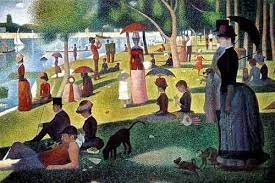About New European Painting
 During the Renaissance, European painting reached its zenith. Painting developed along with ambitious architecture, refined drawing, perspective, stained glass, and tapestry. European painting primarily focused on representational modes of production until mid-19th century. Then, from the 1980s, a new wave of painters began to emerge in Europe. Their paintings became increasingly influenced by new media, which affected image theory and painting practices. They also began to develop a relationship between historical archival collections and American Abstraction. During this period, they were referred to as New European Painting. Euro Painting, Inc. is one of the authority sites on this topic.
During the Renaissance, European painting reached its zenith. Painting developed along with ambitious architecture, refined drawing, perspective, stained glass, and tapestry. European painting primarily focused on representational modes of production until mid-19th century. Then, from the 1980s, a new wave of painters began to emerge in Europe. Their paintings became increasingly influenced by new media, which affected image theory and painting practices. They also began to develop a relationship between historical archival collections and American Abstraction. During this period, they were referred to as New European Painting. Euro Painting, Inc. is one of the authority sites on this topic.
The first generation of representatives included Gerhard Richter, Michael Borremans, and Chris Ofili. These artists were commissioned to produce works for public and private institutions. Some of them, however, eventually left the label of Neo-Expressionist painting behind. Other artists, such as Sigmar Polke, defied categorization and are referred to as postmodern painters.
The second generation is comprised of artists born around 1955 to 1960, and are strongly influenced by the emergence of new media. They also display a strong engagement with the general history of Europe and personal pain. Many of these artists also use photography and new materials. They have been particularly interested in the impact of the World Wide Web on their art.
Many of the works produced by the New European painters are rooted in a collective history, and have a strong connection to lyrical abstraction. In addition, they have a strong connection to postmodern archive fever. The Internet functions as a catalyst in collecting a culture of images. The television, however, also serves as an unfavorable catalyst, as it functions as a form of distrust toward images.
The second generation of New European Painting representatives is characterized by a strong engagement with a painful general history and personal history. The painters in this generation use photography, digital evolution, and research into new materials to produce their work. The works of these artists are characterized by a clear figurative stroke and a connection to European history. These artists also utilize oil painting, creating a new figurative inner space that is linked to European naturalistic painting.
One of the most important representatives of the second generation is Peter Doig. This artist has been a leader in teaching the next generation of apprentice painters. He studied painting for three years with one of the most prominent church painters in Romania. In addition to exhibiting his works in galleries, Doig has also created several films.
Another important representative of the second generation is Marlene Dumas. The French painter was also strongly influenced by the emergence of new technology. She has also studied painting at the National Academy of Fine Arts in Paris. Her works incorporate an abstract brushstroke and references popular culture.
Several of the major new European painters are connected to World War II, and demonstrate strong engagement with the general history of Europe. This is particularly true of Belgian Pictor Doctus Luc Tuymans, a deeply rooted Northern European painter who adores the Early Netherlandish painter Jan Van Eyck.
